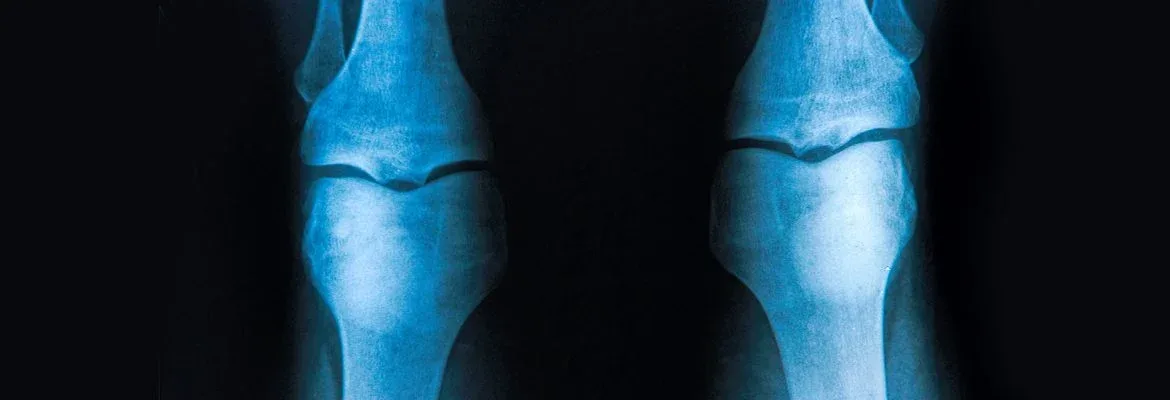The dislocated patella, a kneecap, occurs when the knee joint is forced out of its normal position. This can happen due to a direct blow to the knee, a sudden change in direction, or a traumatic injury.
When the patella is dislocated, it pops out of the groove (trochlear groove) at the thigh bone’s (femur) end. It may then spontaneously pop back into place or require manual manipulation to realign it.
Symptoms of a dislocated patella include severe pain, swelling, and difficulty moving the knee. The pain level can vary depending on the severity of the dislocation.
Treatment options for a dislocated patella may include conservative measures such as rest, immobilization, physical therapy, and pain medications. In some cases, surgical intervention may be necessary, especially for recurrent dislocations, loose ligaments, or other structural issues within the knee joint.
I. What is a Dislocated Patella?

Dislocating the kneecap in the thigh bone groove causes a dislocated patella. Direct blows or quick twists can cause this. The patella may self-align or need manual adjustment.
Symptoms of a dislocated patella include severe pain, swelling, and difficulty moving the knee. Dislocation severity affects pain. It is important to seek medical attention if you experience a dislocated patella, as recurrent dislocations or loose ligaments within the knee joint may require surgical treatment.
-
Types of Patella Dislocations
A patella dislocation occurs when the kneecap, also known as the patella, shifts out of its normal position. There are two main types of patella dislocations:
-
Complete Dislocation:
In this type, the patella completely moves out of the trochlear groove, the shallow groove at the end of the thigh bone that holds the patella in place.
-
Partial Dislocation:
Also known as a subluxation, this type involves the patella partially moving out of the trochlear groove and then returning to its normal position on its own or with manual manipulation.
Both patella dislocations can cause severe pain, swelling, and difficulty moving the knee. The pain level can vary depending on the severity of the dislocation. It is important to seek medical attention if you experience a patella dislocation, as recurrent dislocations or loose ligaments within the knee joint may require surgical treatment.
II. Causes of Patella Dislocation

Patella dislocations occur due to various factors, including traumatic injury and anatomical abnormalities. Common causes of patella dislocations include:
-
1. Direct Blow:
A strong impact to the knee, such as a fall or collision, can force the patella out of its normal position.
-
2. Weak or Imbalanced Thigh Muscles:
Weakness or imbalances in the thigh muscles, particularly the quadriceps, can contribute to patella instability and dislocations.
-
3. Shallow Trochlear Groove:
A naturally shallow trochlear groove, the groove at the end of the thigh bone that the patella sits in, can make the patella more prone to dislocation.
-
4. Loose Ligaments:
Loose or weak connective tissues and ligaments around the patella can increase the risk of dislocation.
-
5. Anatomical Abnormalities:
Some individuals may have anatomical abnormalities, such as a misaligned patella or a femur (thigh bone) that doesn’t properly fit the trochlear groove, increasing the likelihood of patella dislocations.
It is essential to consult with a health care provider or orthopedic surgeon to determine the underlying cause of your patella dislocation and develop an appropriate treatment plan.
-
Direct Blow to the Knee
Direct blows to the knee can result in a dislocated patella, causing severe pain and discomfort. When a strong impact, such as a fall or collision, the patella can be forced out of its normal position in the trochlear groove. This displacement leads to instability and can result in the knee popping out of place.
The pain level of a dislocated kneecap can vary depending on the individual and the severity of the injury. Some individuals experience immediate and intense pain, while others may feel a dull ache or discomfort. Visual symptoms may include swelling, bruising, and a visibly misaligned patella.
Treating a dislocated kneecap typically involves seeking medical attention from a healthcare provider or orthopedic surgeon. They may recommend conservative treatment options such as rest, ice, compression, elevation (RICE), pain medications, and physical therapy. In severe cases or with recurrent dislocations, surgical procedures like arthroscopic surgery may be necessary to stabilize the kneecap and prevent further occurrences.
-
Structural Abnormalities in the Knee Joint
Structural abnormalities in the knee joint can lead to a dislocated kneecap. This occurs when the patella, or kneecap, is forced out of its normal position and back in again. It can cause intense pain, discomfort, visible swelling, bruising, and patella misalignment.
The severity of the pain can vary depending on the individual and the extent of the injury. Seeking medical attention from a healthcare provider or orthopedic surgeon is important for proper diagnosis and treatment. Conservative treatments may include rest, ice, compression, elevation (RICE), pain medications, and physical therapy.
Surgical procedures like arthroscopic surgery may be necessary in more severe cases or with recurrent dislocations. This can help stabilize the kneecap and prevent further occurrences. It is important to address the issue to avoid long-term complications and restore normal function to the knee joint.
-
Weakness in Thigh Muscles
Weakness in the thigh muscles can lead to instability in the knee joint, increasing the risk of a dislocated patella. This condition is characterized by the kneecap popping out of place and then back in, causing pain and discomfort.
The main culprits of thigh muscle weakness are the quadriceps muscles. When these muscles are weak, they fail to provide adequate support to the kneecap, leading to instability and dislocation.
Symptoms of weakness in thigh muscles include:
- Recurrent episodes of the knee popping out of place.
- Severe pain during movement or weight-bearing activities.
- Difficulty walking or standing.
Treatment options for weakness in thigh muscles and dislocated kneecap include:
1. Physical therapy: Strengthening exercises targeting the quadriceps muscles can help improve muscle strength and stability.
2. Pain management: Over-the-counter or prescribed medications can help alleviate pain and inflammation.
3. RICE therapy: Rest, ice, compression, and elevation can help reduce swelling and provide temporary relief.
4. Bracing: Wearing a knee brace or taping the patella can provide additional support and stability during activities.
5. Surgical intervention: In severe cases or when conservative treatments fail, surgical procedures may be considered to repair or reconstruct the damaged structures.
-
Poor Tracking of the Knee Joint
Poor tracking of the knee joint is a common cause of a dislocated patella. This occurs when the kneecap pops out of place and then back in, resulting in pain and discomfort. Weakness in the thigh muscles, particularly the quadriceps, can contribute to poor tracking and instability in the knee joint.
Poor tracking symptoms include recurrent knee popping out of place, severe pain during movement or weight-bearing activities, and difficulty walking or standing.
Effective treatment options for poor tracking and a dislocated kneecap may include physical therapy to strengthen the quadriceps muscles and improve stability. Pain management can be achieved through over-the-counter or prescribed medications. Rest, ice, compression, and elevation (RICE therapy) can help reduce swelling and provide temporary relief. Wearing a knee brace or taping techniques can offer additional support during activities. In severe cases or when conservative treatments are ineffective, surgical intervention may be necessary to repair or reconstruct damaged structures.
-
Recurrent Dislocations
Recurrent dislocations of the patella, also known as the kneecap, can cause severe pain and hinder mobility. This condition occurs when the patella pops out of its normal position in the trochlear groove, commonly due to a direct blow or trauma. The patellofemoral ligament, which connects the thigh bone and patella, may become stretched or torn, leading to instability.
Symptoms of recurrent dislocations include the knee popping out of place, followed by immediate pain. It may not be easy to walk or stand after the dislocation. Proper diagnosis by a healthcare provider is essential, as imaging tests such as magnetic resonance imaging (MRI) can identify any additional damage to soft tissues or loose ligaments.
Treatment options for recurrent patellar dislocations depend on the severity of the injury. Conservative approaches may involve physical therapy to strengthen the quadriceps muscles and improve stability. Over-the-counter and prescription drugs help manage pain. RICE therapy can temporarily relieve edema.
When conservative therapies fail, severe cases may require surgery. Orthopedic surgeons can repair or reconstruct damaged structures during arthroscopic surgery. The surgical procedure aims to restore the kneecap to its normal position and improve stability, allowing patients to resume their normal activities with a reduced risk of recurrent instability.
III. Symptoms of a Dislocated Patella

Symptoms of a dislocated patella, or kneecap, can be alarming and painful. It may occur when the knee pops out of place and back in. This sudden movement often results in immediate and severe pain. Walking or standing may become difficult or even impossible after the dislocation. Sometimes, the kneecap may appear dislocated or out of its normal position.
If you experience a dislocated patella, it is crucial to seek proper medical attention. Imaging tests, like magnetic resonance imaging (MRI), can help identify any additional damage to soft tissues or ligaments in the knee.
-
Severe Pain and Swelling Around the Knee
Severe pain and swelling around the knee can be indicative of a dislocated patella. When the patella, or kneecap, slips out of its normal position and pops back in, it can cause significant discomfort. This injury often occurs due to a direct blow or traumatic injury to the knee.
If you experience a dislocated patella with severe pain and swelling, it is essential to seek immediate medical attention. An orthopedic surgeon or healthcare provider can assess the extent of the injury and recommend an appropriate treatment plan.
Rest, ice, compression, and elevation (RICE therapy) may help severe patella dislocation discomfort and edema. Physical therapy strengthens and stabilizes knee muscles. Pain medications may also be prescribed to manage the discomfort.
-
A Visible Change in the Position of the Kneecap
A visible change in the position of the kneecap, also known as a dislocated patella, occurs when the kneecap pops out of its normal groove and then shifts back into place. This can cause immediate pain, discomfort, swelling, and difficulty walking.
Dislocated patellas require medical evaluation and treatment. The doctor may recommend RICE therapy—rest, ice, compression, and elevation to relieve pain and swelling.
Physical therapy can be beneficial to strengthen the muscles around the knee and improve stability, reducing the risk of further dislocations. Pain medications may also be prescribed to manage the discomfort.
For more severe cases or recurrent dislocations, surgical intervention may be necessary. This can involve arthroscopic surgery to repair damaged ligaments or create a deeper groove in the thigh bone to prevent future dislocations.
IV. Diagnosis of a Dislocated Patella

Diagnosing a dislocated patella involves a thorough examination and medical history review by a healthcare professional. The doctor will assess the knee’s range of motion, stability, and pain levels. X-rays or MRIs may be recommended to confirm the diagnosis and assess further damage.
Symptoms of a dislocated patella include severe pain and swelling, the sensation of the knee popping out of place, and difficulty bearing weight on the affected leg. The knee may also appear visibly misaligned or have a noticeable deformity.
It is important to seek medical attention promptly after a dislocated patella occurs. Delaying treatment might cause cartilage or ligament damage and recurrent dislocations.
After diagnosis, the doctor will discuss treatment based on dislocation severity and frequency. It is essential to follow the recommended treatment plan to prevent future episodes and ensure proper healing of the knee joint.
-
Physical Exam by a Healthcare Professional
When experiencing symptoms of a dislocated patella, it is crucial to seek prompt medical attention. A healthcare professional will conduct a physical exam to assess the extent of the injury. This examination may involve evaluating the appearance and alignment of the knee, checking for signs of swelling or deformity, and evaluating the patient’s ability to bear weight on the affected leg. The healthcare provider may also inquire about the circumstances surrounding the dislocation and any previous incidents of patellar instability.
Besides the physical exam, X-rays or MRIs may be required to confirm the diagnosis and examine surrounding structure damage. The healthcare provider will determine the most appropriate treatment options based on the findings.
Treatment for a dislocated patella can range from conservative approaches, including pain medications, physical therapy, bracing, and activity modification, to more invasive options, such as arthroscopic surgery. The choice of treatment depends on the specific circumstances of the dislocation, the patient’s medical history, and their overall health.
V. Treatment for a Dislocated Patella

Treatment for a dislocated patella, or kneecap, depends on the severity of the injury and the individual’s overall health.
Conservative treatment options include pain medications, physical therapy, bracing, and activity modification. Biological treatment helps improve quadriceps muscles to support the patella.
Surgical treatment may be necessary in more severe cases or for recurrent dislocations. Arthroscopic surgery, performed by an orthopedic surgeon, can help repair damaged ligaments or realign the patella within the trochlear groove.
In addition to the chosen treatment, it is essential to rest, apply ice packs, and elevate the leg to reduce pain and swelling. It is also advisable to seek medical attention to diagnose the injury and properly create an individualized treatment plan.
For diagnosis and damage assessment, X-rays or MRIs may be ordered.
Overall, treatment for a dislocated patella aims to restore stability and function to the knee, allowing individuals to return to their normal activities with reduced pain and risks of future dislocations.
-
Conservative Treatment Options
Conservative treatment options for a dislocated patella, where the knee pops out of place and back in, include pain medications, physical therapy, bracing, and activity modification.
Pain medications can help alleviate discomfort and reduce inflammation. Physical therapy is crucial in strengthening the surrounding muscles, especially the quadriceps, to support the patella better and prevent further dislocations.
Bracing can be used to stabilize the knee and prevent excessive movement. Activity modification involves avoiding high-impact or repetitive movements that may aggravate the condition.
These conservative treatments are typically recommended for mild to moderate cases of patellar dislocation. However, seeking medical attention to diagnose the injury and properly create an individualized treatment plan is important.
For severe or recurrent dislocations, surgical treatment may be necessary, which could involve repairing damaged ligaments or realigning the patella within the trochlear groove through arthroscopic surgery performed by an orthopedic surgeon.
Rest, ice packs, and leg elevation can also help reduce pain and swelling. For diagnosis and damage assessment, X-rays or MRIs may be ordered.
VI. FAQS
1. What is a dislocated patella?
Dislocating the kneecap in the trochlear groove of the thigh bone causes a dislocated patella.
2. I experienced a sudden pop in my knee followed by pain; what could it be?
If your knee popped out of place and moved back in on its own, it is likely a dislocated patella. Your pain may be due to the injury caused by the dislocation.
3. How severe can the pain be from a dislocated patella?
Injury severity affects pain. It might cause mild to severe pain during movement.
4. Are there any pictures available to show what a dislocated knee looks like?
It is recommended to consult a medical professional for an accurate diagnosis. However, you can find images and illustrations of dislocated kneecaps online for reference.
5. My knee popped out of place but then went back in on its own; should I be worried?
Although your kneecap has gone back into place, it is important to seek medical attention. Dislocated patellas can lead to further instability and recurrent dislocations if not properly treated.
6. Why does my knee keep popping out of place?
There can be various reasons for recurrent dislocations, such as weak thigh muscles, abnormal anatomy of the knee joint, or loose ligaments. Consulting with a healthcare provider and undergoing appropriate tests can help determine the cause.
7. What should I do if my knee pops out of the socket?
If your knee pops out of the socket, it is recommended to seek immediate medical attention. Do not try to move the knee back into place on your own, as it can cause further damage.
8. How can a dislocated patella be treated?
Treatment options vary based on the severity of the dislocation. Conservative treatments may include rest, pain medications, physical therapy, and a brace. Surgical procedures such as arthroscopic surgery may be required in severe cases or recurrent dislocations.
9. How can I prevent a knee that keeps popping out of place?
To help prevent recurrent instability, physical therapy may be recommended to strengthen the muscles around the knee joint. Avoiding activities that may cause a direct blow to the knee is also important.
10. Can a displaced patella heal on its own?
In some cases, a partially dislocated patella may return to its normal position on its own. However, consulting with an orthopedic surgeon or healthcare provider for a proper diagnosis and treatment plan is always advisable.
